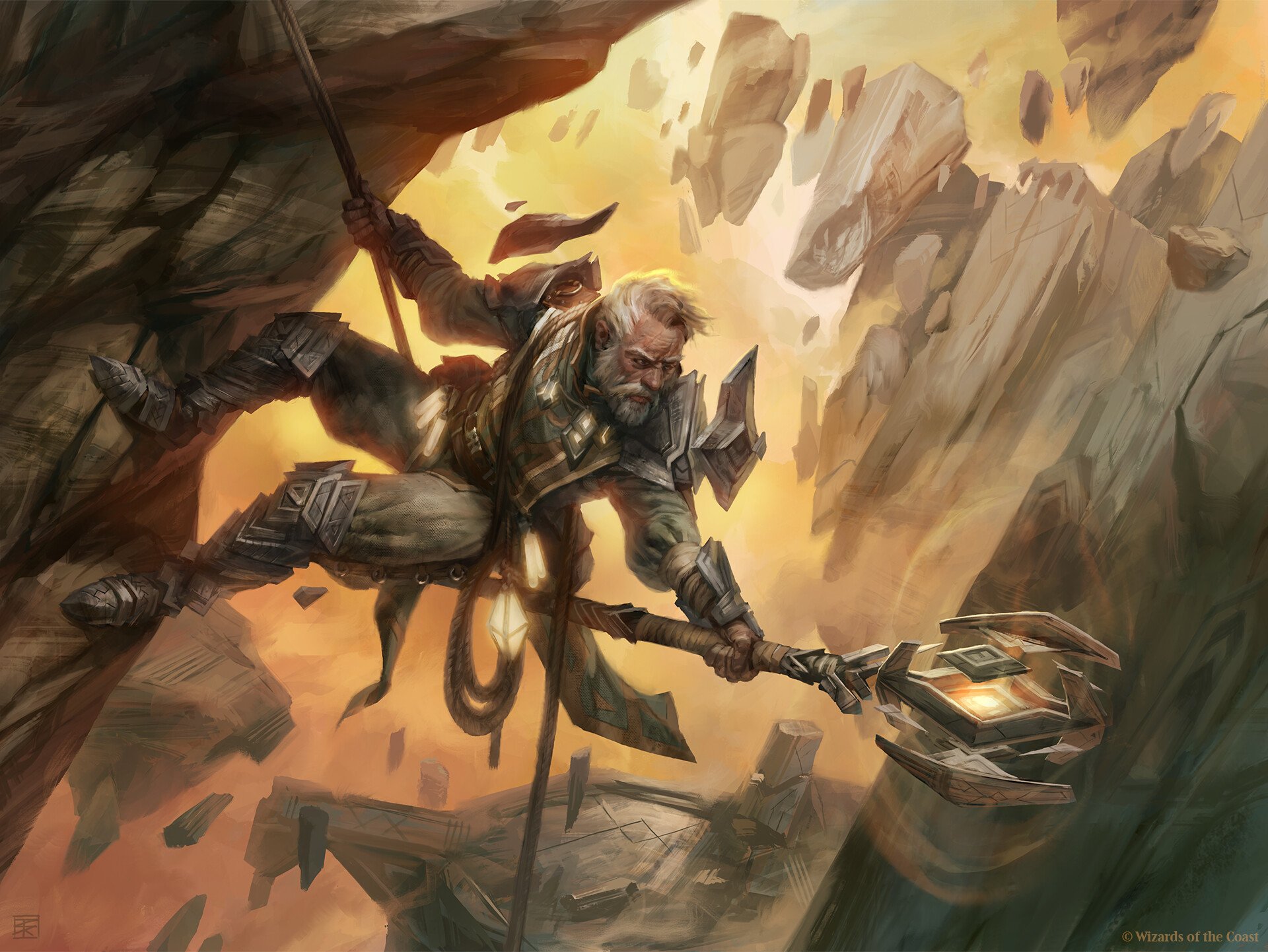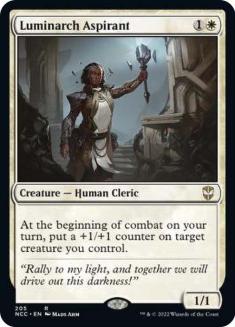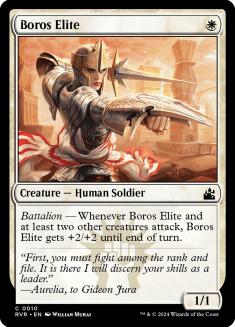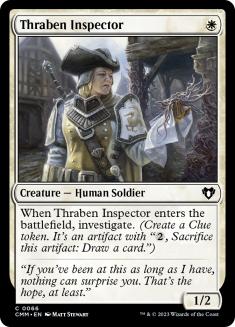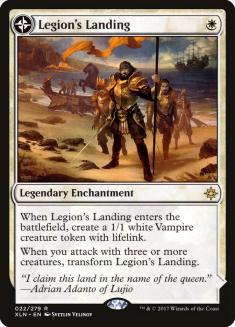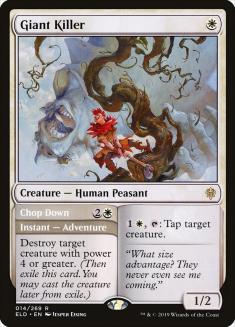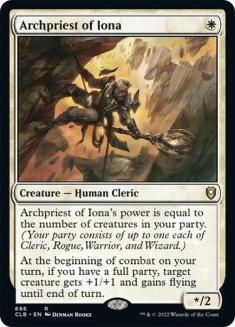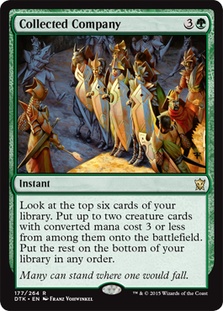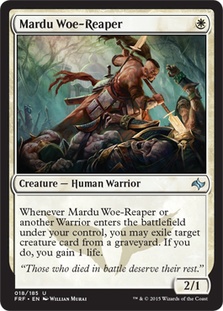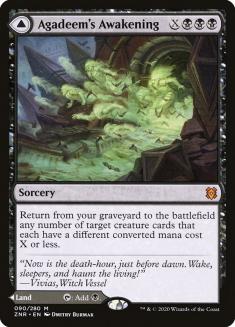I’ve been pretty focused on Zendikar Rising Standard for the last few weeks, both because that’s the focus of VS Live! during preview season and because I had the last Championship Qualifier and the Season Two Championship for the SCG Tour Online to prepare for.
If you want to know how my weekend went, consult the following tweet:
I was stubborn and didn’t want to play the broken deck. You should always play the broken deck. Hopefully we have a Standard format without a broken deck sometime soon, but I won’t be holding my breath.
With the events of last weekend firmly in the rearview mirror, I’m excited to get into formats where you play against Omnath, Locus of Creation in less than half of your matches, starting with Pioneer. Modern has a much higher barrier to entry for new cards, so Zendikar Rising is likely to have a more diverse impact on the smaller format, especially given the obvious synergy between Omnath and fetchlands. As much as I was hoping for another card that fetchlands break in half, I’m going to stick to the format where you only have Fabled Passage for now.
One of the decks I’ve tried to make work in Pioneer in the past is Human tribal. There are plenty of strong components already available, and Thalia’s Lieutenant is one of the most powerful aggressive creatures in the entire format. Last spring I was excited at the prospect of these decks when General Kudro of Drannith was printed in Ikoria and while General Kudro has indeed been a part of Human decks since, it hasn’t been enough to elevate the archetype above the fringe of the format.
But Zendikar Rising has added some new tools for these archetypes, and they are quite powerful. First up is Luminarch Aspirant. As a standalone threat targeting itself each combat, its first attack is for three, a solid rate for a two-mana creature. The fact that it scales up from there is gravy.
But Luminarch Aspirant is so much more than that. Its trigger allows you to control combat by strategically pumping the right creatures. This can mean making one big threat to break through a stalled battlefield or spreading the wealth around against defensive creatures to make your opponent’s blocks worse. If that +1/+1 counter lets your 2/1 Soldier of the Pantheon attack into a Sylvan Caryatid, you’ve effectively generated three damage, not one.
And much like Thalia’s Lieutenant, Aspirant leaves behind those counters when it dies, which is a huge part of why Lieutenant is as powerful as it is. Both cards continue to scale up in power as the game continues, so they demand a removal spell most of the time. But that trade is beneficial to the aggro player since they retain their biggest creatures.
So Luminarch Aspirant wants a deck with plenty of one-mana creatures to start gaining immediate value, and that means a heavy-white, linear aggro version of Humans:
Creatures (34)
- 4 Boros Elite
- 4 Soldier of the Pantheon
- 2 Kytheon, Hero of Akros
- 4 Thraben Inspector
- 4 Thalia's Lieutenant
- 4 Dauntless Bodyguard
- 4 Venerated Loxodon
- 2 Giant Killer
- 3 General Kudro of Drannith
- 3 Luminarch Aspirant
Lands (18)
Spells (8)

Some lists stick to Mono-White and play Benalish Marshal as a lord, and there are also Orzhov lists that play both Marshal and General Kudro, but I prefer an approach with as low a curve as possible, and with Aspirant as another Anthem I’d like to minimize the number of three-mana creatures in the deck to increase consistency.
There are plenty of options in the one-mana slot, and most of my choices above are stock. Soldier of the Pantheon and Dauntless Bodyguard are the best of the Savannah Lions-with-upside options since they provide resilience to various forms of removal. Boros Elite is the most efficient body when you’re consistently triggering battalion, which this deck certainly is, and Thraben Inspector is the best white creature ever printed.
Yes, that last one is an exaggeration but not nearly as much as you think. Thraben Inspector is a really good Magic card.
The two one-drops I’m maindecking that aren’t as common are Legion’s Landing and Giant Killer. Landing is awkward since it doesn’t produce a Human but it’s powerful enough that I want access to it anyway. That extra burst of mana and extra body is great with Venerated Loxodon, as we saw in Standard last year, and Adanto, the First Fort is a great way to steal attrition games in a deck that otherwise doesn’t want to play long games. The lifelink body is even a great target for Luminarch Aspirant in racing situations. It’s hard to oversell just how good Legion’s Landing is in white aggro decks.
Giant Killer is my concession to the fact that this deck needs a high density of threats, but you don’t want to be constantly brick-walled by bigger creatures. Giant Killer plays both roles, so you can fit the necessary removal into your deck while reaching the creature count you want.
The black splash is made even easier with the addition of Brightclimb Pathway, so you can afford to play plenty of black cards in the sideboard. I greatly prefer Thoughtseize to Kitesail Freebooter because of mana efficiency and the fact that it consistently does what you want it to. Oftentimes Kitesail Freebooter looks at a hand with multiple removal spells and the best you can do is force them to use the one you want them to on it. Thoughtseize can take a key sweeper or Bring to Light when you need it to.
There’s also the issue of Oops All Spells decks emerging, where the noncreature clause on Kitesail Freebooter makes it unplayable. I appreciate wanting to play the card that synergizes better with the rest of the deck, but when it comes to sideboard cards the most important box to check is how well they do their job. Thoughtseize is unparalleled on that metric.
It’s Party Time
In addition to Luminarch Aspirant, I’m also high on the prospect of Archpriest of Iona in Pioneer. The history of Wild Nacatl shows how much of a difference there is between two power and three on your one-mana creature, and while Archpriest of Iona won’t often attack for three on Turn 2, it can easily do so on Turn 3, and has the potential to do even better than that.
Archpriest has thus far failed to make an impression in Standard, though that may change with Uro, Titan of Nature’s Wrath gone. But in Pioneer there’s a deeper pool of quality creatures to choose from, so the restrictions necessary to maximize the party mechanic aren’t as damning. You also have the ability to play plenty of colors with lands like Unclaimed Territory and Mana Confluence, thus further increasing your options to fill out the curve.
Most importantly, moving into Pioneer means playing Collected Company, an excellent card for filling out your party. It puts two bodies on the table, potentially jumping you from two creature types to the full four in one card, and digs six cards deep to find the creature types that you need. Your opponents are going to be incentivized to kill your non-Archpriest creatures since that will weaken the Archpriest as well, and Collected Company is the perfect card to punish them for taking that line.
Looking through recent decklists, I was intrigued by the following list and used it as a starting point:
Creatures (32)
- 2 Hamlet Captain
- 2 Bloodsoaked Champion
- 4 Reflector Mage
- 4 Thalia's Lieutenant
- 3 Rogue Refiner
- 2 Gust Walker
- 3 General Kudro of Drannith
- 4 Acquisitions Expert
- 4 Archpriest of Iona
- 4 Luminarch Aspirant
Lands (21)
Spells (7)

I like the spread on creature types that this list has and the discipline in keeping to an Orzhov core while splashing green and blue, but it had a few issues. First, the curve was glutted on twos. Bloodsoaked Champion is one of the best one-drops in Pioneer and fits the creature types of this deck exactly. It should be a four-of.
Second is I think Acquisitions Expert is too weak of a card, and there’s a great replacement Rogue you can play in Glint-Sleeve Siphoner. This gives you an outlet for the energy from Rogue Refiner, and provides enough energy that you can now use Aether Hub as an additional multicolor land to help the manabase.
Making those changes I arrived at the following list:
Creatures (33)
- 4 Bloodsoaked Champion
- 1 Mardu Woe-Reaper
- 4 Reflector Mage
- 4 Thalia's Lieutenant
- 4 Glint-Sleeve Siphoner
- 3 Rogue Refiner
- 2 Gust Walker
- 3 General Kudro of Drannith
- 4 Archpriest of Iona
- 4 Luminarch Aspirant
Lands (21)
Spells (6)

The Mardu Woe-Reaper was a concession both to curve and to getting another Warrior into the deck. The count for Warrior is still relatively low, but Bloodsoaked Champion rarely dies forever, so you don’t need to have as many in total.
Gust Walker looks strange but it really is the next-best Wizard. Wizard is the hardest creature type to fill out for an aggro deck, but Reflector Mage is excellent and often not a creature your opponents want to kill since it already did its damage, and this deck doesn’t have access to Phantasmal Image to double up on them.
I decided to trim one copy of Agadeem’s Awakening, since the land side isn’t great in a four-color deck and it’s tough to cast a triple-black spell in this deck without Urborg, Tomb of Yawgmoth. But that effect is powerful enough in this deck that I want access to it. Your curve is already condensed around one-, two-, and three-mana creatures because of Collected Company, and that means Agadeem’s Awakening is going to be great for five or six mana, which is the sweet spot. It’s a great way to add just a dash more resilience to a deck that wants to have a battlefield full of creatures at all times.
In the manabase I’ve moved up to eleven five-color lands, which makes the mana work pretty easily. Since the sideboard is entirely Orzhov, I made sure all the non-Unclaimed Territory lands tap for at least one of those colors so those spells would be castable on a consistent basis. You have a similar sideboard to the Orzhov list, with Thoughtseize, Rest in Peace, Dire Tactics, and Fatal Push as simply the best cards in their roles available.
This list fills out the remaining slots with more creatures to help out Collected Company, though in the case of Sin Collector and Xathrid Necromancer, you get solid creatures that have relevant creature types for party. The exception is Skyclave Apparition, which I think is too powerful a card, especially in combination with Collected Company, to not play. You have sixteen lands that make white mana for it, excluding the potential for naming Spirit with Unclaimed Territory, which is enough for a couple of copies.
Better Than Mono-Black Aggro?
Mono-Black Aggro has been the gold standard for aggro decks in Pioneer for essentially its entire history, in part because that deck has a deep core of solid creatures in a single color and so it gets to play great utility lands like Castle Locthwain and Mutavault. The consistency and resilience Mono-Black’s manabase provides means that other aggro decks need to be more powerful to compete.
Humans keeps pushing forward on that axis, as it’s the tribe that consistently gains new cards from each set. With Luminarch Aspirant and Archpriest of Iona, I think the deck has what it takes to compete on that level.

